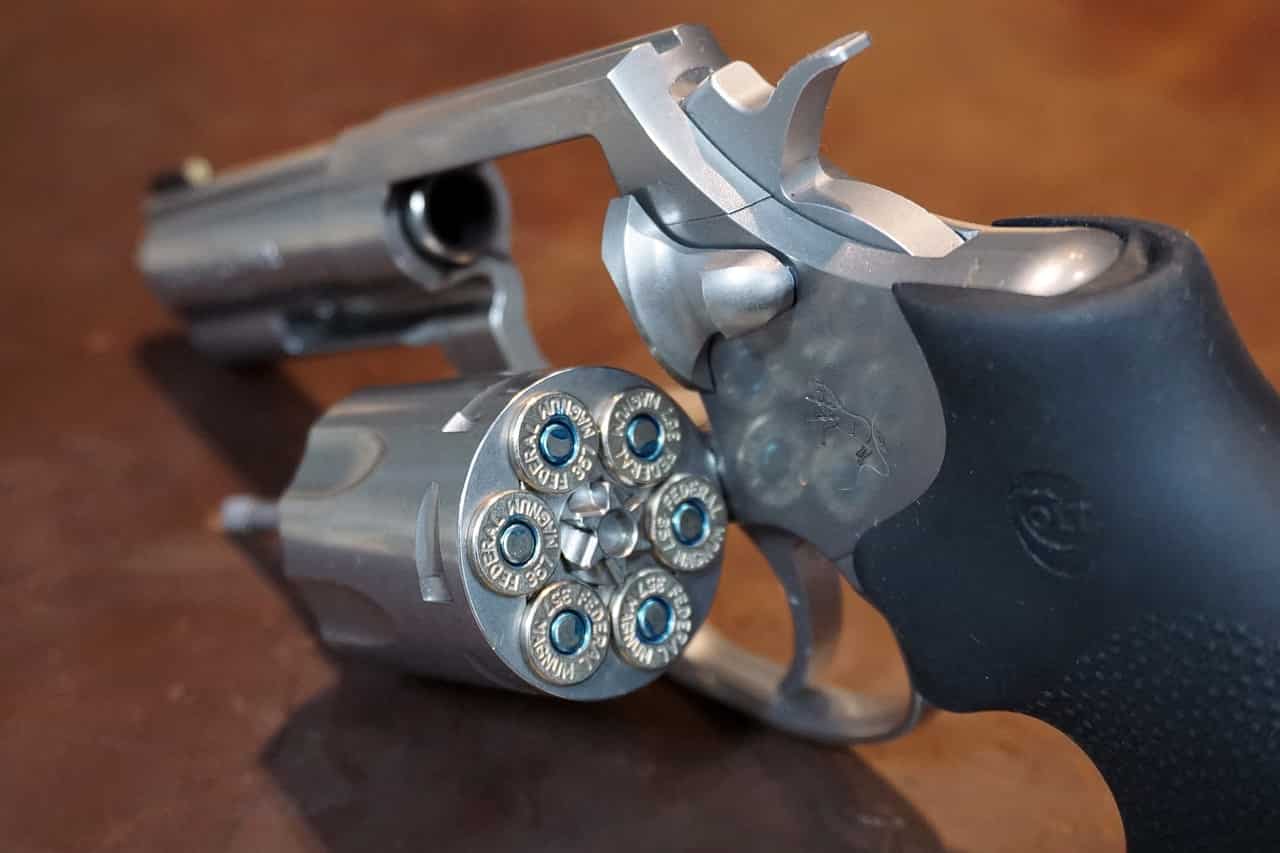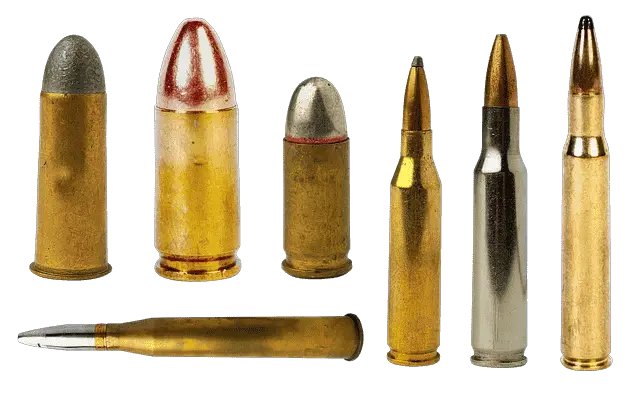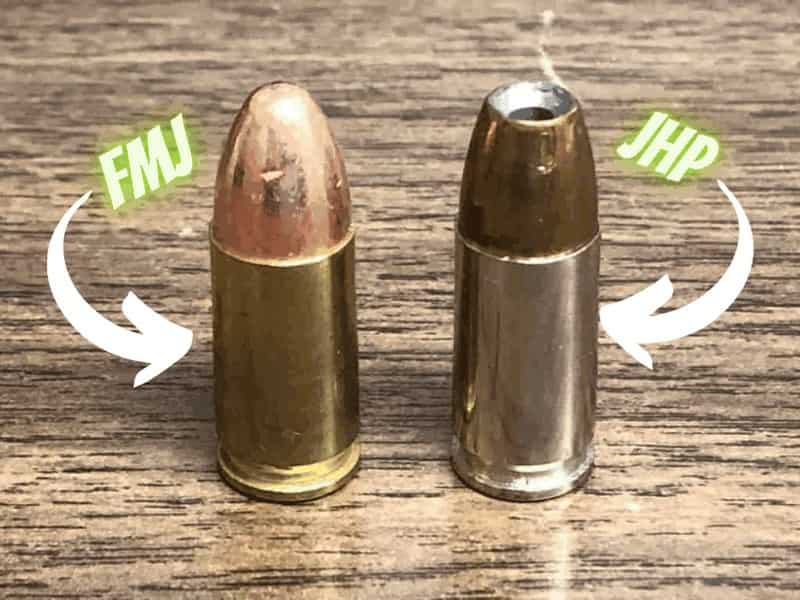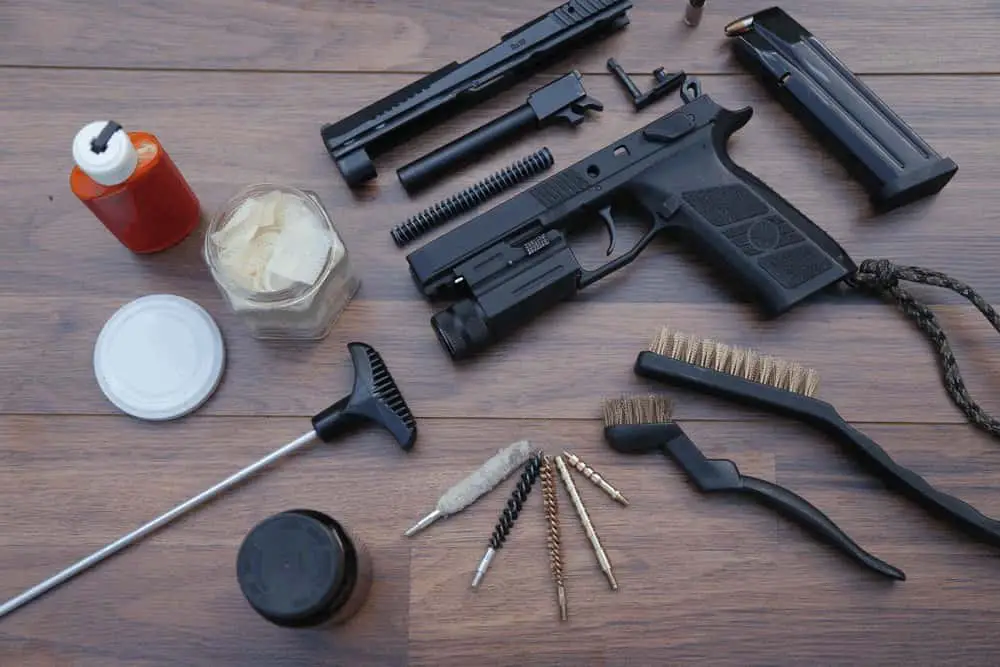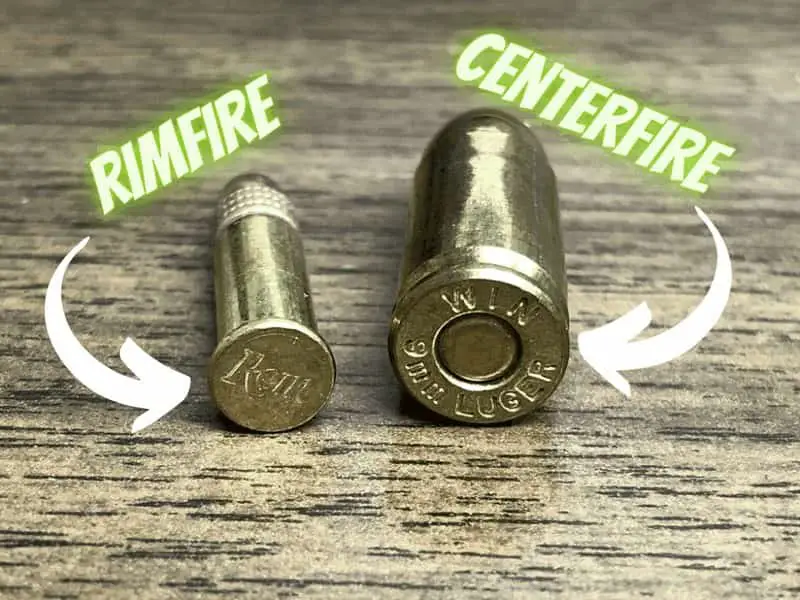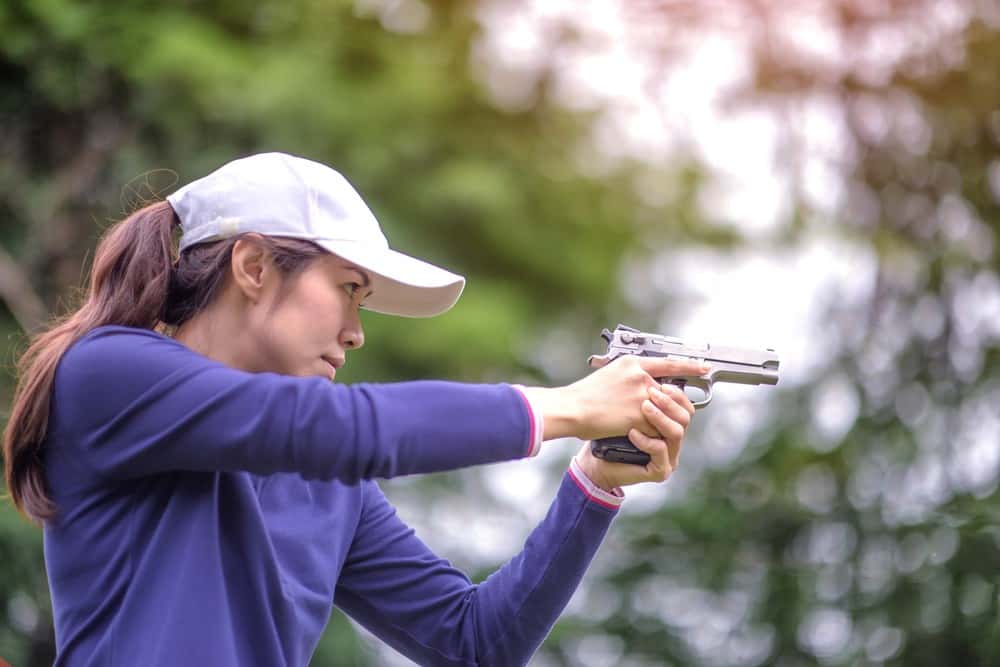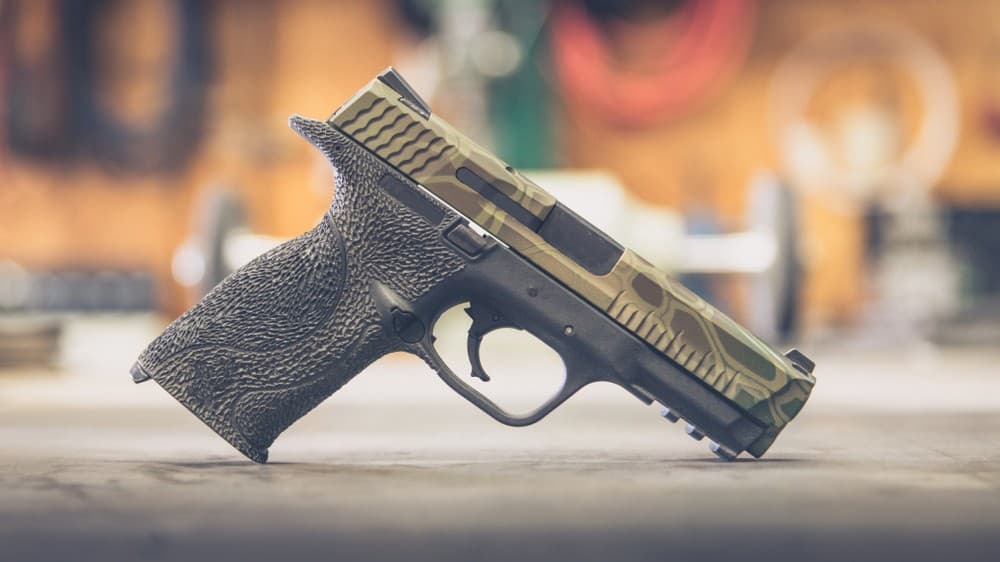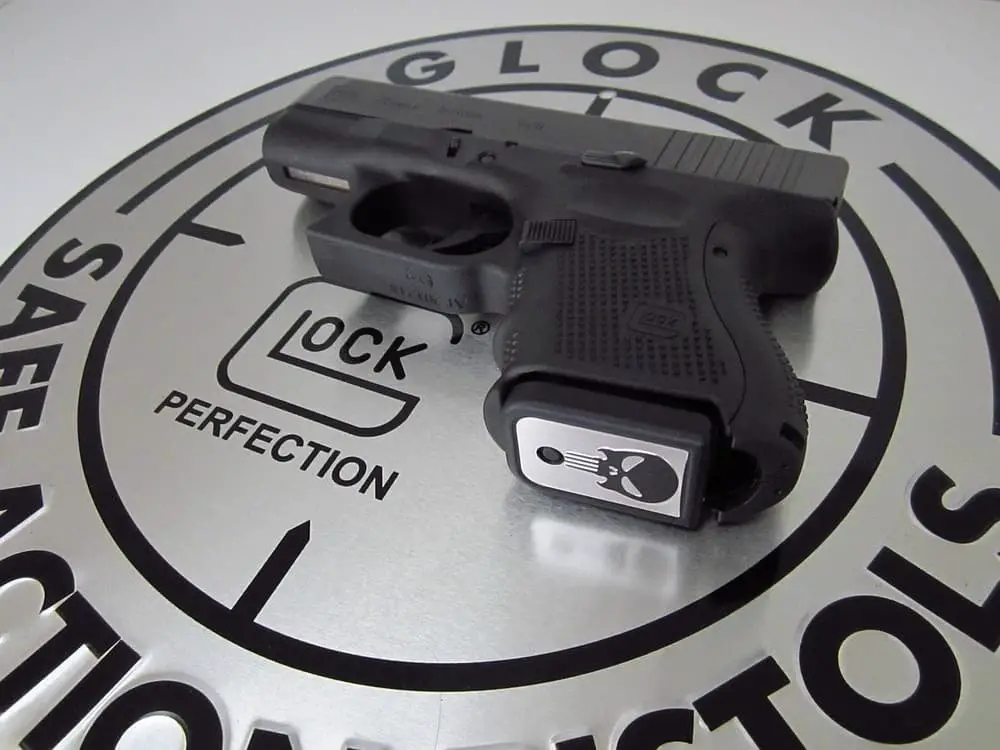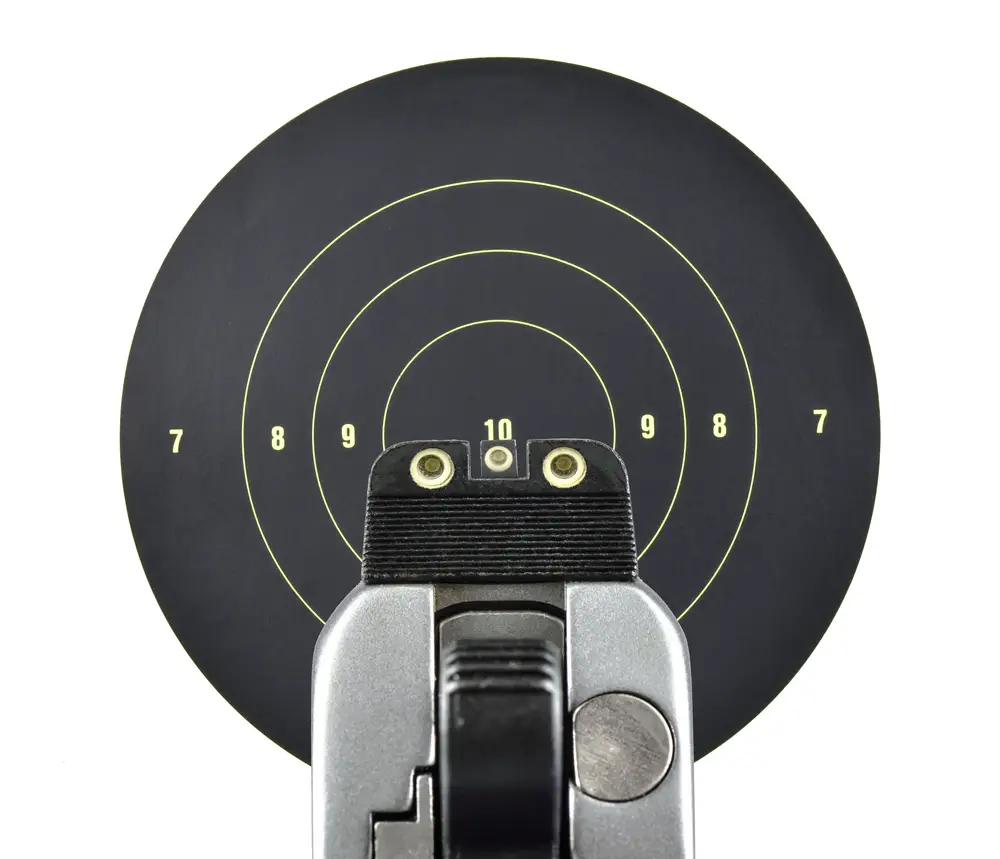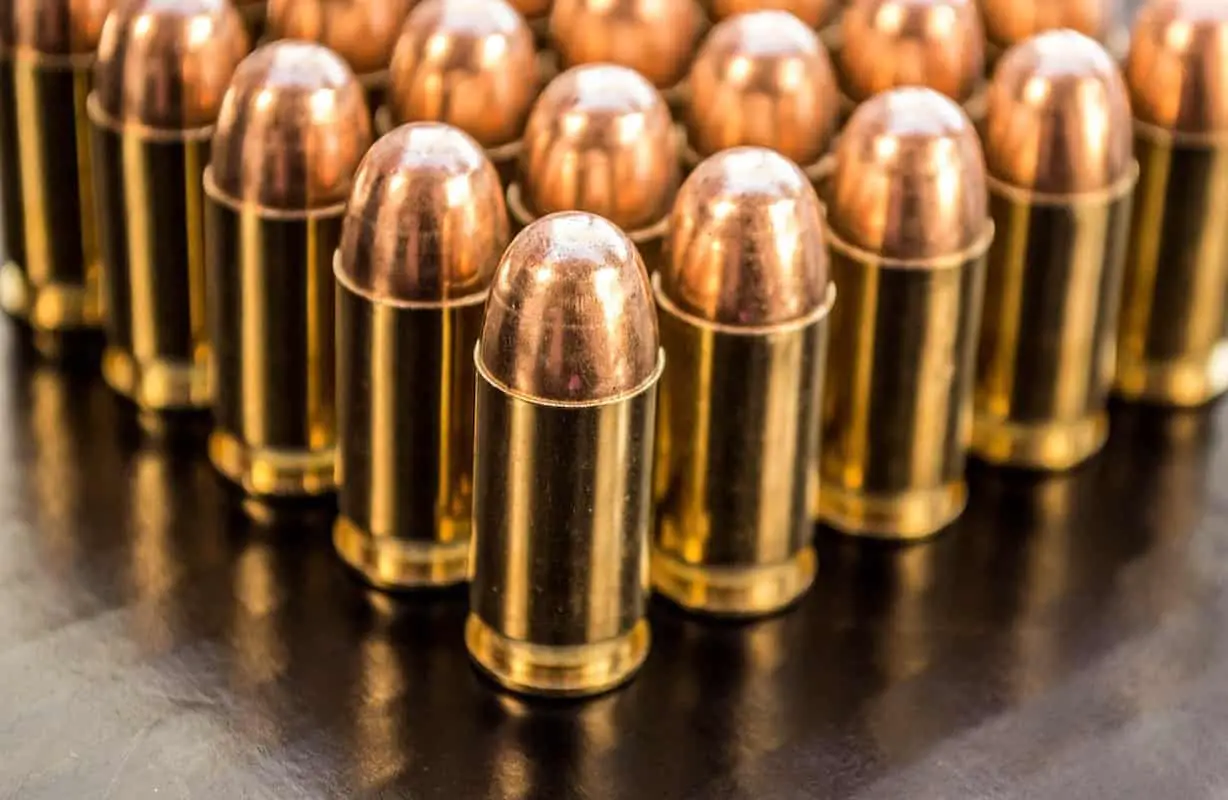Understanding Shotgun Chokes

Shotgun chokes are devices that help control the spread of shot as it exits the barrel of a shotgun. They are essential for achieving accuracy and precision when shooting at targets, especially in the sport of sporting clays. Chokes come in various shapes, sizes, and degrees of constriction, and each one has a specific purpose.
The degree of choke constriction determines how much the shot will spread as it exits the barrel. The tighter the constriction, the smaller the spread, and the more focused the shot pattern. The most common types of shotgun chokes are cylinder choke, improved cylinder (IC) choke, modified choke, and full choke. Each of these chokes has a different level of constriction, with the cylinder choke having the least and the full choke having the most.
The cylinder choke does not have any constriction and allows the shot to spread quickly, making it ideal for shooting at close range. The IC choke has a slight constriction and is suitable for shooting at targets within 20-25 yards. The modified choke has a moderate constriction and is effective for shooting at targets within 25-30 yards. The full choke has the most constriction and is best for shooting at targets beyond 30 yards.
Shotgun chokes are usually marked with notches or stars to indicate their level of constriction. For example, a choke with one notch is an IC choke, while a choke with three notches is a full choke. It is essential to use the right choke for the type of shooting you will be doing to achieve the best results.
In summary, understanding shotgun chokes is crucial for achieving accuracy and precision when shooting at targets. The degree of choke constriction determines how much the shot will spread, and each type of choke has a specific purpose. It is essential to use the right choke for the type of shooting you will be doing to achieve the best results.
Best Shotgun Chokes for Sporting Clays
Sporting clays is a challenging and exciting sport that requires skill, accuracy, and the right equipment. One of the most important pieces of equipment for a sporting clay shooter is the shotgun choke. A good choke can make all the difference in accuracy and consistency.
There are many types of shotgun chokes available on the market, and choosing the right one can be overwhelming. However, with a little knowledge and research, it is possible to find the best choke for sporting clays.
Here are some of the best shotgun chokes for sporting clays:
1. Improved Cylinder Choke
The Improved Cylinder (IC) choke is a popular choice for sporting clays. It has a constriction of around 0.010 inches and provides a moderate amount of constriction. The IC choke is ideal for shooting close to medium-range targets and is great for beginners.
2. Modified Choke
The Modified (M) choke is another popular choice for sporting clays. It has a constriction of around 0.020 inches and provides a moderate to tight constriction. The M choke is ideal for shooting medium-range targets and is suitable for intermediate shooters.
3. Light Modified Choke
The Light Modified (LM) choke is a less common but still effective option for sporting clays. It has a constriction of around 0.015 inches and provides a moderate constriction. The LM choke is ideal for shooting medium-range targets and is suitable for intermediate shooters.
4. Skeet Choke
The Skeet (SK) choke is a wide-open choke that has a constriction of around 0.005 inches. It provides very little constriction and is ideal for shooting close-range targets. The SK choke is great for beginners and is also suitable for shooting trap and skeet.
5. Improved Modified Choke
The Improved Modified (IM) choke has a constriction of around 0.025 inches and provides a tight constriction. It is ideal for shooting medium to long-range targets and is suitable for experienced shooters.
When choosing a shotgun choke for sporting clays, it is important to consider the range of targets you will be shooting and your skill level. A beginner may want to start with a wider choke, while an experienced shooter may prefer a tighter choke.
In conclusion, the best shotgun choke for sporting clays depends on personal preference and shooting style. However, the chokes mentioned above are some of the most popular and effective options for sporting clay shooting.
Different Types of Chokes
When it comes to sporting clays, the choke you use can make a big difference in your accuracy and success. There are several different types of chokes available for shotguns, each with its own unique characteristics and benefits. Here are the most common types of chokes used in sporting clays:
Cylinder
A cylinder choke has no constriction, meaning the diameter of the bore remains constant throughout the length of the choke. This results in a wide spread of shot, making it ideal for close-range shooting. It’s also useful when hunting small game or birds that are flying in close proximity.
Improved Cylinder
An improved cylinder choke has a slightly tighter constriction than a cylinder choke, but still allows for a wide spread of shot. This makes it a versatile option for sporting clays, as it can be used for both close-range and mid-range shooting. It’s also a good choice for hunting upland game birds.
Light Modified
A light modified choke is slightly tighter than an improved cylinder choke, but still offers a relatively wide spread of shot. This makes it a good choice for shooting targets at mid-range distances. It’s also a popular choice for hunting ducks and geese.
Modified
A modified choke has a moderate constriction, resulting in a tighter spread of shot. This makes it ideal for mid-range shooting, as it provides a good balance between shot density and range. It’s also a popular choice for hunting pheasants and other upland game birds.
Improved Modified
An improved modified choke has a tighter constriction than a modified choke, resulting in an even tighter spread of shot. This makes it a good choice for shooting targets at longer distances. It’s also a popular choice for hunting larger game, such as turkeys.
Full
A full choke has the tightest constriction of all the chokes, resulting in the tightest spread of shot. This makes it ideal for shooting targets at long-range distances. It’s also a popular choice for hunting waterfowl, as it provides the necessary shot density to take down larger birds.
Overall, the type of choke you choose will depend on the type of shooting you plan to do and the range at which you’ll be shooting. It’s important to experiment with different chokes to find the one that works best for you and your shooting style.
Shotgun Choke Performance
Shotgun chokes are designed to alter the pattern of shot as it leaves the barrel of the shotgun. The performance of a choke is critical to the success of a shooter in sporting clays. A choke that is too tight or too open can result in a missed target.
The performance of a shotgun choke is determined by the pattern density and coverage it provides. Pattern density refers to the number of pellets that hit the target, while coverage refers to the spread of the shot. The ideal choke should provide a balance between pattern density and coverage.
A tighter choke will provide a denser pattern, while a looser choke will provide a wider coverage. However, a denser pattern can result in fewer pellets hitting the target, while a wider coverage can result in too few pellets hitting the target.
It is important to note that the performance of a choke is also affected by the type of ammunition used. Different ammunition will produce different patterns, and the ideal choke for one type of ammunition may not be ideal for another.
Shooters should experiment with different chokes and ammunition to find the perfect combination that provides the desired pattern density and coverage. It is also important to note that the performance of a choke can vary depending on the distance to the target.
In summary, the performance of a shotgun choke is critical to the success of a shooter in sporting clays. A balance between pattern density and coverage is ideal, but the perfect combination will vary depending on the shooter’s preference and the type of ammunition used. Experimentation is key to finding the ideal choke for each shooter.
Choosing the Right Choke
When it comes to sporting clays, choosing the right choke can make all the difference in your performance. A choke is a constriction at the end of the shotgun barrel that controls the spread of the shot. The right choke will help you hit the target consistently and accurately.
There are different types of chokes available, and the choice depends on several factors such as the target, range, stations, pellets, shot size, focus, advantage, and opportunity. It is essential to understand these factors to choose the right choke for your needs.
One of the critical factors to consider is the target. Sporting clays involve different types of targets, and each requires a different choke. For example, a close-range target requires a choke with a wider spread, while a far-range target requires a tighter choke for a more concentrated shot.
Another factor to consider is the range. The range determines the amount of spread required to hit the target accurately. A shorter range requires a wider spread, while a longer range requires a tighter choke.
The stations also play a significant role in choosing the right choke. The stations involve different angles and trajectories, and each requires a different choke. For example, a high-angle target requires a tighter choke, while a low-angle target requires a more open choke.
The pellets and shot size also affect the choice of choke. A larger shot size requires a tighter choke, while a smaller shot size requires a more open choke. The focus and advantage also play a role in choosing the right choke. The focus involves the shooter’s ability to aim accurately, while the advantage involves the shooter’s position relative to the target.
In conclusion, choosing the right choke is crucial to your success in sporting clays. Understanding the factors such as the target, range, stations, pellets, shot size, focus, advantage, and opportunity will help you make an informed decision. Take the time to experiment with different chokes to find the one that suits your needs best.
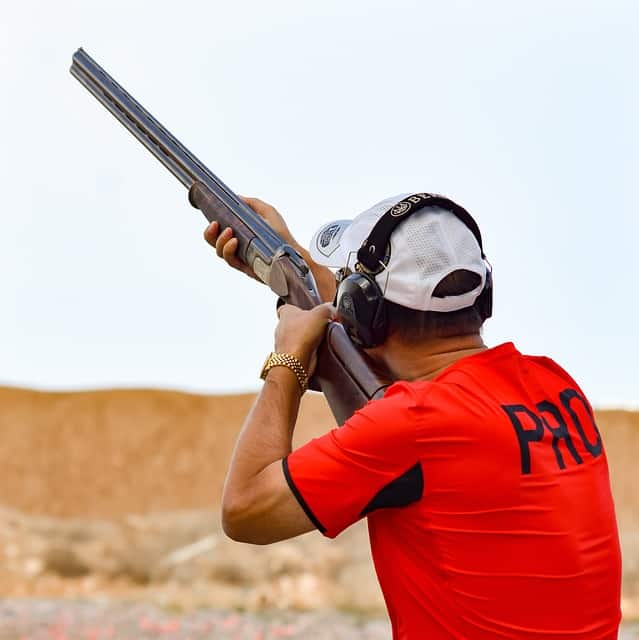
Changing Chokes
One of the advantages of using a shotgun for sporting clays is the ability to change chokes to adapt to different shooting scenarios. Chokes can easily be changed by unscrewing the old one and replacing it with a new one.
Most modern shotguns come with interchangeable chokes that can be swapped out quickly and easily. Some shotguns require a choke wrench to remove the old choke, while others can be removed by hand. It is important to refer to the shotgun manufacturer’s instructions on how to change chokes correctly.
When changing chokes, it is essential to select the right choke for the specific shooting scenario. This means considering the distance of the target, the size of the shot, and the spread of the shot. It is recommended to have a variety of chokes on hand to be prepared for any shooting situation.
It is also important to note that changing chokes can affect the point of impact of the shotgun. It is recommended to pattern the shotgun with the new choke before using it in a shooting scenario.
Overall, changing chokes is a simple and easy process that can enhance a shooter’s performance in sporting clays. By having a variety of chokes on hand and selecting the right one for each situation, a shooter can improve their accuracy and control the spread of their shots.
Shotgun Brands and Choke Compatibility
When it comes to choosing the best shotgun choke for sporting clays, it’s important to consider the compatibility of the choke with the brand of shotgun being used. Here are some of the most popular shotgun brands and their choke compatibility:
Browning
Browning shotguns typically use Invector-Plus chokes, which are compatible with a wide variety of sporting clay chokes. Some popular options include Briley Midas chokes and Carlson’s Sporting Clays chokes.
Beretta
Beretta shotguns use Mobilchoke or Optima-Choke tubes, depending on the model. Both of these chokes are compatible with a range of sporting clay chokes, including Briley Spectrum and Muller chokes.
Benelli
Benelli shotguns use Crio chokes, which are designed to improve shot pattern and reduce recoil. These chokes are compatible with a variety of sporting clay chokes, including Briley Helix and Carlson’s Crio Plus chokes.
Winchester
Winchester shotguns use Invector-Plus chokes, which are compatible with a wide range of sporting clay chokes. Some popular options include Briley Midas chokes and Carlson’s Sporting Clays chokes.
Mossberg
Mossberg shotguns typically use Accu-Choke tubes, which are compatible with a variety of sporting clay chokes. Some popular options include Briley Spectrum and Carlson’s Extended Sporting Clays chokes.
Weatherby
Weatherby shotguns use the Weatherby Multi-Choke system, which allows for easy interchangeability of chokes. Some popular options for sporting clays include Briley Helix and Carlson’s Sporting Clays chokes.
Overall, it’s important to choose a shotgun choke that is compatible with the brand and model of shotgun being used. By selecting the right choke, shooters can improve their accuracy and performance on the sporting clay range.
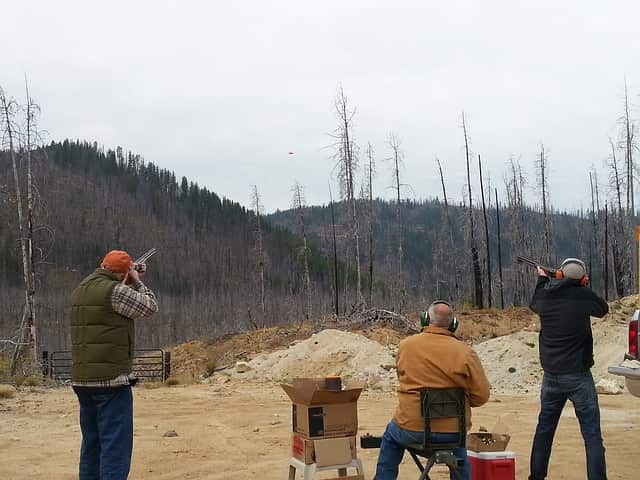
Shotgun Choke Material
The material used to make the shotgun choke can affect its durability, performance, and price. Two common materials used for shotgun chokes are stainless steel and nickel.
Stainless Steel
Stainless steel is a popular material for shotgun chokes due to its high resistance to corrosion and rust. This makes it a good choice for shooters who frequently shoot in wet or humid conditions. Stainless steel chokes are also known for their durability and long lifespan. They are generally more expensive than chokes made from other materials, but their longevity and resistance to corrosion make them a worthwhile investment for serious shooters.
Nickel
Nickel is another material commonly used for shotgun chokes. It is a hard, durable material that is resistant to wear and tear. Nickel chokes are also known for their smooth finish, which can help reduce friction and improve shot patterns. They are generally less expensive than stainless steel chokes, making them a good choice for budget-conscious shooters.
In conclusion, the choice of material for a shotgun choke is an important consideration when selecting the right choke for sporting clays. Stainless steel and nickel are two popular materials, each with their own unique benefits and drawbacks. Shooters should consider their individual needs and preferences when choosing between these materials.
Shotgun Types and Chokes
When it comes to sporting clays, choosing the right shotgun and choke can make all the difference. There are two main types of shotguns used in sporting clays: Over/Under and Semi-Automatic. Each type has its own advantages and disadvantages, and the choice ultimately comes down to personal preference.
Over/Under Shotgun
Over/Under shotguns are a popular choice for sporting clays due to their accuracy and reliability. These shotguns have two barrels stacked one on top of the other. The shooter can fire one or both barrels at a time, depending on the target.
One advantage of Over/Under shotguns is that they offer a consistent point of impact. This is because the barrels are fixed in place and do not move during firing. Additionally, Over/Under shotguns tend to be lighter and more maneuverable than other types of shotguns, making them a good choice for shooters who need to move quickly between targets.
When it comes to chokes, Over/Under shotguns typically use interchangeable chokes. This allows the shooter to adjust the spread of the shot, depending on the target. Some popular chokes for Over/Under shotguns include:
- Improved Cylinder: Good for close-range targets
- Modified: Good for mid-range targets
- Full: Good for long-range targets
Semi-Automatic
Semi-Automatic shotguns are another popular choice for sporting clays. These shotguns use a gas or recoil-operated mechanism to automatically load and eject shells. This allows the shooter to fire multiple shots quickly, without having to manually reload.
One advantage of Semi-Automatic shotguns is that they can be more forgiving for shooters who are less experienced. The automatic loading and ejection can help compensate for mistakes in timing and aim. Additionally, Semi-Automatic shotguns tend to have less recoil than other types of shotguns, making them more comfortable to shoot.
When it comes to chokes, Semi-Automatic shotguns also typically use interchangeable chokes. Some popular chokes for Semi-Automatic shotguns include:
- Skeet: Good for close-range targets
- Improved Cylinder: Good for mid-range targets
- Modified: Good for long-range targets
Ultimately, the choice between an Over/Under or Semi-Automatic shotgun comes down to personal preference. Both types of shotguns can be effective in sporting clays, and both offer their own advantages and disadvantages. The key is to find the shotgun and choke combination that works best for you.
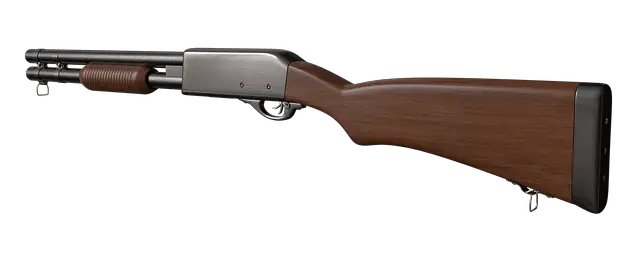
Chokes for Different Game
When it comes to selecting the best shotgun choke for sporting clays, it is essential to consider the type of game you will be hunting. Different types of game require different chokes to ensure that you hit your target accurately. Here are some of the most popular types of game and the chokes that work best for them.
Dove
Dove hunting is a popular sport that requires a quick and accurate shot. For dove hunting, it is best to use an improved cylinder or modified choke. This type of choke provides a wider shot pattern, which is essential for hitting fast-moving targets. It is also important to use smaller shot sizes, such as 7 ½ or 8, to ensure that you do not damage the meat.
Rabbit
Rabbit hunting requires a different approach than dove hunting. Rabbits are known for their quick movements and erratic behavior, making them a challenging target. For rabbit hunting, it is best to use a modified or full choke. These chokes provide a tighter shot pattern, which is necessary for hitting small targets at a distance. It is also important to use larger shot sizes, such as 6 or 7 ½, to ensure that you have enough stopping power.
Pigeons
Pigeon hunting is a popular sport that requires a combination of accuracy and patience. For pigeon hunting, it is best to use a modified or full choke. These chokes provide a tighter shot pattern, which is essential for hitting small targets at a distance. It is also important to use larger shot sizes, such as 6 or 7 ½, to ensure that you have enough stopping power. Additionally, it is important to lead the target properly to ensure a clean shot.
In summary, selecting the best shotgun choke for sporting clays depends on the type of game you will be hunting. It is important to choose the right choke to ensure that you hit your target accurately and humanely. By using the right choke and shot size, you can improve your chances of success and enjoy a more rewarding hunting experience.
Practicing with Chokes
Practicing with chokes is essential to improve your accuracy and control over your shots. It allows you to understand the effect of different chokes on your shooting and helps you choose the right choke for different targets.
One way to practice with chokes is to shoot at a pattern board. A pattern board is a board with a target in the center and a grid pattern around it. Shooters can use this board to see the pattern of their shots and adjust their choke accordingly. The National Sporting Clays Association (NSCA) recommends shooting at a distance of 30 yards for 12 gauge and 25 yards for 20 gauge.
Another way to practice with chokes is to shoot at different targets with different chokes. This helps you understand the effect of different chokes on different targets. For example, a tighter choke may be better for longer shots, while a looser choke may be better for closer shots.
It’s important to note that technique also plays a role in the effectiveness of chokes. Proper technique, such as proper gun mount and follow-through, can improve your accuracy and control over your shots.
In summary, practicing with chokes is essential to improve your accuracy and control over your shots. Shooters can practice with pattern boards and shooting at different targets with different chokes to understand the effect of different chokes on their shooting. It’s important to note that technique also plays a role in the effectiveness of chokes.
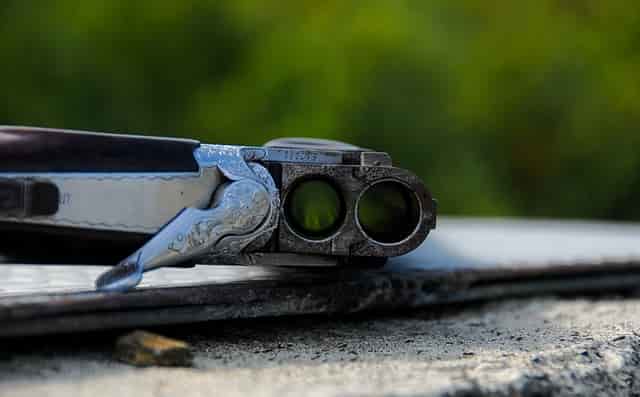
Buying Guide for Shotgun Chokes
When it comes to choosing the right shotgun choke for sporting clays, there are several factors to consider. Here are some tips to help you make an informed decision:
Gauge
The first thing to consider is the gauge of your shotgun. Chokes are designed to fit specific gauges, so make sure you choose one that is compatible with your shotgun.
Constriction
Chokes come in a variety of constrictions, which determine the spread of your shot. The tighter the constriction, the more focused your shot will be. A more open constriction will result in a wider spread. It’s important to choose a constriction that suits your shooting style and the type of targets you’ll be shooting.
Material
Chokes are typically made from steel, titanium, or other metals. Steel chokes are the most common and are suitable for most shooting situations. Titanium chokes are more expensive but are lighter and more durable. Other materials, such as tungsten, can also be used for specialized shooting.
Brand
There are many brands of shotgun chokes on the market, each with their own strengths and weaknesses. Some popular brands include Carlson’s, Briley, and Beretta. It’s important to do your research and read reviews to find a brand that suits your needs.
Price
Shotgun chokes can range in price from under $20 to over $100. While it’s tempting to go for the cheapest option, investing in a high-quality choke can make a big difference in your shooting accuracy. Consider your budget and choose the best choke you can afford.
Installation
Make sure you know how to properly install your choke before attempting to do so. Improper installation can damage your shotgun and lead to dangerous situations. If you’re unsure, consult a professional gunsmith for assistance.
By considering these factors, you can choose a shotgun choke that will improve your accuracy and help you succeed in sporting clays.
Shotgun Choke and Gun Fit
When it comes to sporting clays, having the right shotgun choke is important, but it’s not the only factor to consider. The fit of the gun is just as crucial to hitting those challenging targets.
The length of pull (LOP) is one aspect of gun fit that can affect the shooter’s accuracy. A proper LOP allows the shooter to mount the gun comfortably and consistently, which can lead to more consistent shots. Additionally, cast, or the angle of the stock in relation to the barrel, can affect the shooter’s accuracy. A gun with too much or too little cast can cause the shooter to miss targets consistently.
Another factor to consider is the point of impact (POI). The POI is where the gun shoots in relation to where the shooter aims. A gun that shoots too high or too low can cause the shooter to miss targets consistently.
When selecting a shotgun choke, it’s important to consider how it will affect the POI. Different chokes can change the spread of the shot, which can affect the POI. For example, a tighter choke will have a narrower spread, resulting in a higher POI.
In summary, when it comes to sporting clays, having the right shotgun choke is important, but the fit of the gun is just as crucial. A proper LOP, cast, and POI can all affect the shooter’s accuracy. When selecting a shotgun choke, it’s important to consider how it will affect the POI.

Shotgun Choke and Ammo
When it comes to sporting clays, the right shotgun choke and ammo can make all the difference. A choke is a constriction at the end of the barrel that controls the spread of the shot. The tighter the choke, the more the shot will stay together, providing a denser pattern and longer range. The right choke depends on the type of clay target being shot and the distance at which it is being shot.
The type of ammo used also plays a crucial role in sporting clays. Lighter loads with less recoil are generally preferred, as they allow for faster follow-up shots and less fatigue over the course of a long day. However, it’s important to find a balance between recoil and effectiveness.
It’s important to note that the action of the shotgun can also impact performance. Over/under shotguns are popular for sporting clays due to their balance and ease of use, but semi-automatic and pump-action shotguns can also work well.
In terms of chokes, there are a variety of options available. Some of the best chokes for sporting clays include:
- Carlson’s Beretta/Benelli Mobil chokes: This is a versatile choke that can spread pellets decently up to 40 yards. It’s a good all-around option for sporting clays.
- Briley Extended Spectrum chokes: These chokes offer a wide range of constriction options, making them ideal for different types of clay targets.
- Kicks High Flyer chokes: These chokes are designed to provide a consistent shot pattern at longer ranges, making them a good choice for sporting clays.
When it comes to ammo, a 12-gauge shell with a 2 3/4 inch length and a 7.5 or 8 shot size is a good starting point. However, it’s important to experiment with different loads to find what works best for you and your shotgun.
Overall, finding the right shotgun choke and ammo is a personal process that requires experimentation and practice. By trying out different options and paying attention to performance, shooters can find the combination that works best for them.
Frequently Asked Questions
What are the different types of shotgun chokes and how do they affect performance in sporting clays?
There are several types of shotgun chokes, including cylinder, improved cylinder, modified, improved modified, full, and extra-full. Each choke affects the spread of the shot differently, with tighter chokes producing a narrower spread and more open chokes producing a wider spread. The choice of choke depends on the target distance and presentation.
What choke constriction is best for longer range targets in sporting clays?
For longer range targets, a tighter choke constriction is generally recommended. Improved modified or full chokes are often used for targets that are presented at longer distances.
Can I use the same choke for all targets in sporting clays or do I need to switch between them?
It is possible to use the same choke for all targets in sporting clays, but it may not be the most effective approach. Switching between chokes can help optimize performance for different target presentations and distances.
What factors should I consider when selecting a shotgun choke for sporting clays?
Factors to consider when selecting a shotgun choke for sporting clays include the distance and presentation of the targets, the shooter’s personal preferences, and the shotgun’s barrel length and bore diameter.
Is it necessary to use a specific brand of shotgun choke for sporting clays or can I use any brand?
It is not necessary to use a specific brand of shotgun choke for sporting clays. However, it is important to ensure that the choke is compatible with the shotgun and that it is of high quality to ensure optimal performance.
How often should I clean my shotgun choke to maintain optimal performance in sporting clays?
Shotgun chokes should be cleaned regularly to maintain optimal performance. The frequency of cleaning depends on the frequency of use and the type of ammunition used, but a general rule of thumb is to clean the choke after every 100 rounds or so.
There are several types of shotgun chokes, including cylinder, improved cylinder, modified, improved modified, full, and extra-full. Each choke affects the spread of the shot differently, with tighter chokes producing a narrower spread and more open chokes producing a wider spread. The choice of choke depends on the target distance and presentation.
“}},{“@type”:”Question”,”name”:”What choke constriction is best for longer range targets in sporting clays?”,”acceptedAnswer”:{“@type”:”Answer”,”text”:”
For longer range targets, a tighter choke constriction is generally recommended. Improved modified or full chokes are often used for targets that are presented at longer distances.
“}},{“@type”:”Question”,”name”:”Can I use the same choke for all targets in sporting clays or do I need to switch between them?”,”acceptedAnswer”:{“@type”:”Answer”,”text”:”
It is possible to use the same choke for all targets in sporting clays, but it may not be the most effective approach. Switching between chokes can help optimize performance for different target presentations and distances.
“}},{“@type”:”Question”,”name”:”What factors should I consider when selecting a shotgun choke for sporting clays?”,”acceptedAnswer”:{“@type”:”Answer”,”text”:”
Factors to consider when selecting a shotgun choke for sporting clays include the distance and presentation of the targets, the shooter’s personal preferences, and the shotgun’s barrel length and bore diameter.
“}},{“@type”:”Question”,”name”:”Is it necessary to use a specific brand of shotgun choke for sporting clays or can I use any brand?”,”acceptedAnswer”:{“@type”:”Answer”,”text”:”
It is not necessary to use a specific brand of shotgun choke for sporting clays. However, it is important to ensure that the choke is compatible with the shotgun and that it is of high quality to ensure optimal performance.
“}},{“@type”:”Question”,”name”:”How often should I clean my shotgun choke to maintain optimal performance in sporting clays?”,”acceptedAnswer”:{“@type”:”Answer”,”text”:”
Shotgun chokes should be cleaned regularly to maintain optimal performance. The frequency of cleaning depends on the frequency of use and the type of ammunition used, but a general rule of thumb is to clean the choke after every 100 rounds or so.
“}}]}
Have you ever thought about buying ammo online?
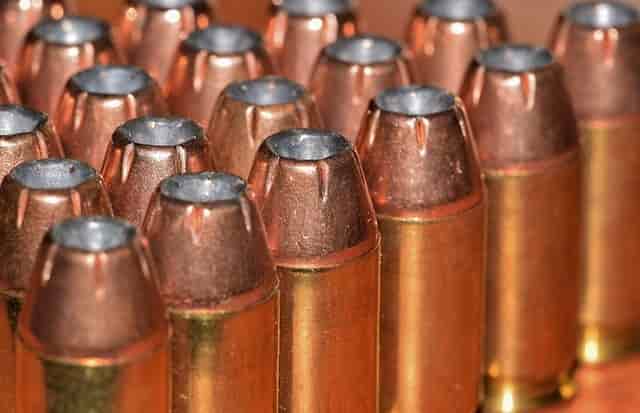
I’m telling you it’s so easy with Lucky Gunner! The ammo shown on their site is guaranteed to be in stock and will ship fast. I heartily endorse Lucky Gunner and so do their many customers.
“Okay, so far I’ve dealt twice with LuckyGunner, and all I can say is, I LOVE YOUR COMPANY!!!!
Imagine: only items in stock are advertised. Who’da thunk, eh? The more highly advertised ones – Cheaper Than Dirt, Cabela’s, et. al. – will put you on backorder forever and a day. But LuckyGunner – I ordered 500 shells of .45 ACP (hard to get in this “shortage”) – and there it was at my address. No backorders, no bull. Business as it should be.
Yes, I’m telling my friends! I’m constantly writing down your addy on bits of paper (and running out of the latter), spreading the joyous news, “No backorders! No bull! Try LuckyGunner.com, you won’t be sorry!” Thank you for being there for an ammo-starved public. And, thanks for the SUPERB customer service.”
— Walter J., Silverdale, WA —


Jason Huskey
Owner of CCWClasses.net
Jason Huskey is a family man with three kids and a wonderful wife. He’s always starting new hobbies, but his true passion lies in shooting sports. Jason has been a CCW license holder for over 10 years and carries every day. In addition to firearms, he also enjoys playing guitar and writing songs. He tries to live by the Christian values he believes in.
More things you might enjoy…
Can a 38 Special Shoot 357 Rounds?
Image by MikeGunner from Pixabay I’ve long since discovered that very few activities give me the same thrill and sense of security as firing a gun. As a gun owner and enthusiast, I’ve always been curious about which guns can shoot which kinds of ammunition. I have a Derringer five-shot revolver that uses .22 rounds.…
Who Makes the Most Popular Brands of Ammo
If you are here to figure out who makes Herter’s ammo just look below the following table for a more thorough answer. If you are looking for a specific type of ammo, then you need to start by figuring out who makes it. There are lots of options for ammunition and each type of bullet…
What Does Full Metal Jacket Mean?
If you have heard the term full metal jacket, then you might be wondering what this means. I know that growing up, I heard this term a lot. I dismissed it as some sort of saying or cliche. Eventually, I decided that I needed to figure out what people meant when they use this term.…
How Often Should You Clean Your Gun?
After purchasing a firearm, you might wonder how often you should clean your gun. The truth is that it largely depends on how often you use it and where you live. Keep reading to learn more. How Often Should You Clean Your Gun? The short answer: do a light cleaning after every shooting session and…
What Is The Main Difference Between Centerfire And Rimfire Ammunition?
Rimfire vs Centerfire Everyone has to start somewhere. If you’re new to guns, learning the difference between rimfire and centerfire ammunition is important. Let me backtrack a moment. The first time I went out on the gun range, I had zero idea that there were different types of ammo for different types of weapons. All I knew…
Continue Reading What Is The Main Difference Between Centerfire And Rimfire Ammunition?
How Should You Hold a Handgun for Maximum Accuracy?
Whether it’s for sport or you find yourself in a defensive situation where you need to use a handgun, how you hold it will significantly affect your accuracy. Developing your handgun techniques will help you become a better shot and keep you safe. Read on to learn the answer to the question: How should you…
Continue Reading How Should You Hold a Handgun for Maximum Accuracy?
What Is Stippling On A Gun?
Hey, would you like a more firm grip on your gun? Would that help you shoot better? Well that is what stippling is for. Stippling is a modification to the grip that makes it, well, more grippy. It is done by sanding off the original finish and then using a hot soldering iron to make…
What Is A Centerfire Pistol?
To answer the question: “What Is A Centerfire Pistol?”, you must first understand that there are two main types of ammunition: Centerfire Rimfire These ammo categorizations are based on where the firing pin hits the back of the bullet to make it fire. A centerfire pistol is one where the firing pin strikes the center…
Is It Bad To Dry Fire A Glock?
There are loads of myths and assumptions surrounding handguns. If you grew up around guns, you probably heard some of these myths. Today, we will answer the question: Is it bad to dry fire a Glock. The Quick Answer Dry firing modern centerfire guns is completely fine (this includes most Glocks). The firing pin does…
What Is The Sight Picture?
When you first became interested in shooting you probably heard the terms sight picture and sight alignment being thrown around. Most people tend to use the two terms interchangeably; however, they do not mean the same thing. In this guide, I will make a clear distinction between sight picture and sight alignment. To master any new trade, you must…
What is Ball Ammo
When you hear the term “ball ammo” you may be picturing an actual ball. While the term did originate from ball shaped ammo, that’s not what it means today. Most ball ammo today is cylindrical in shape. It will have a lead core coated with copper. Keep reading to learn all about the history and…
